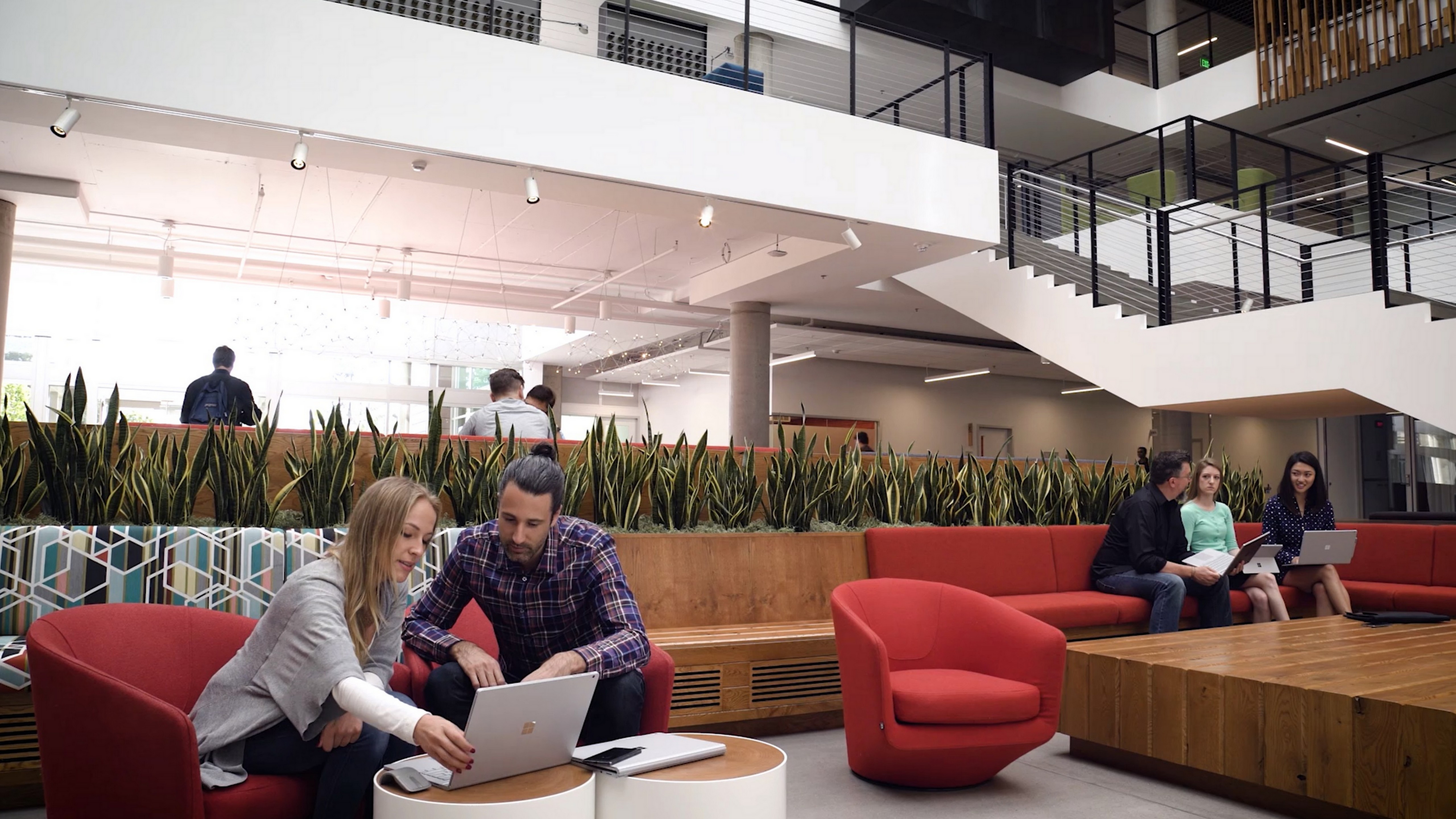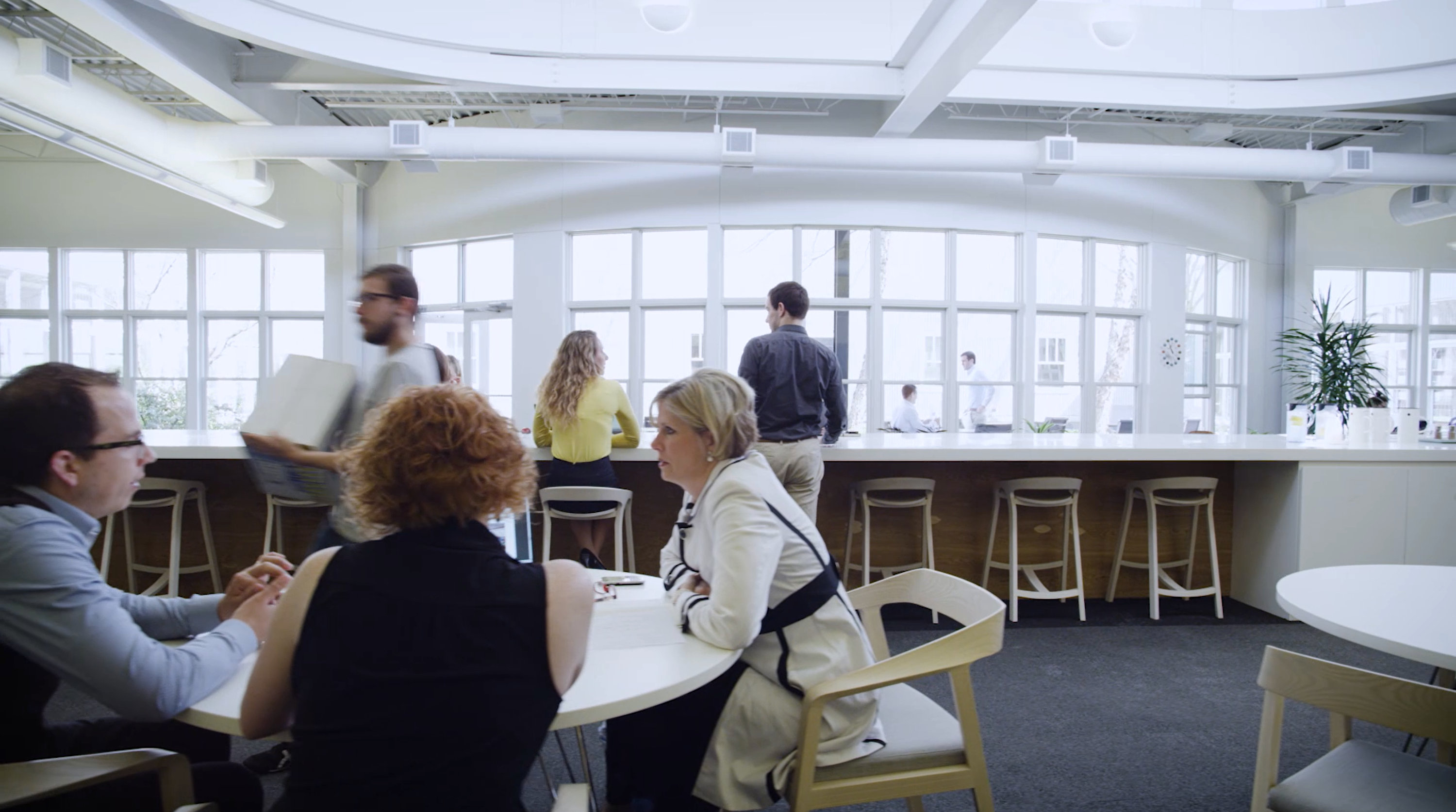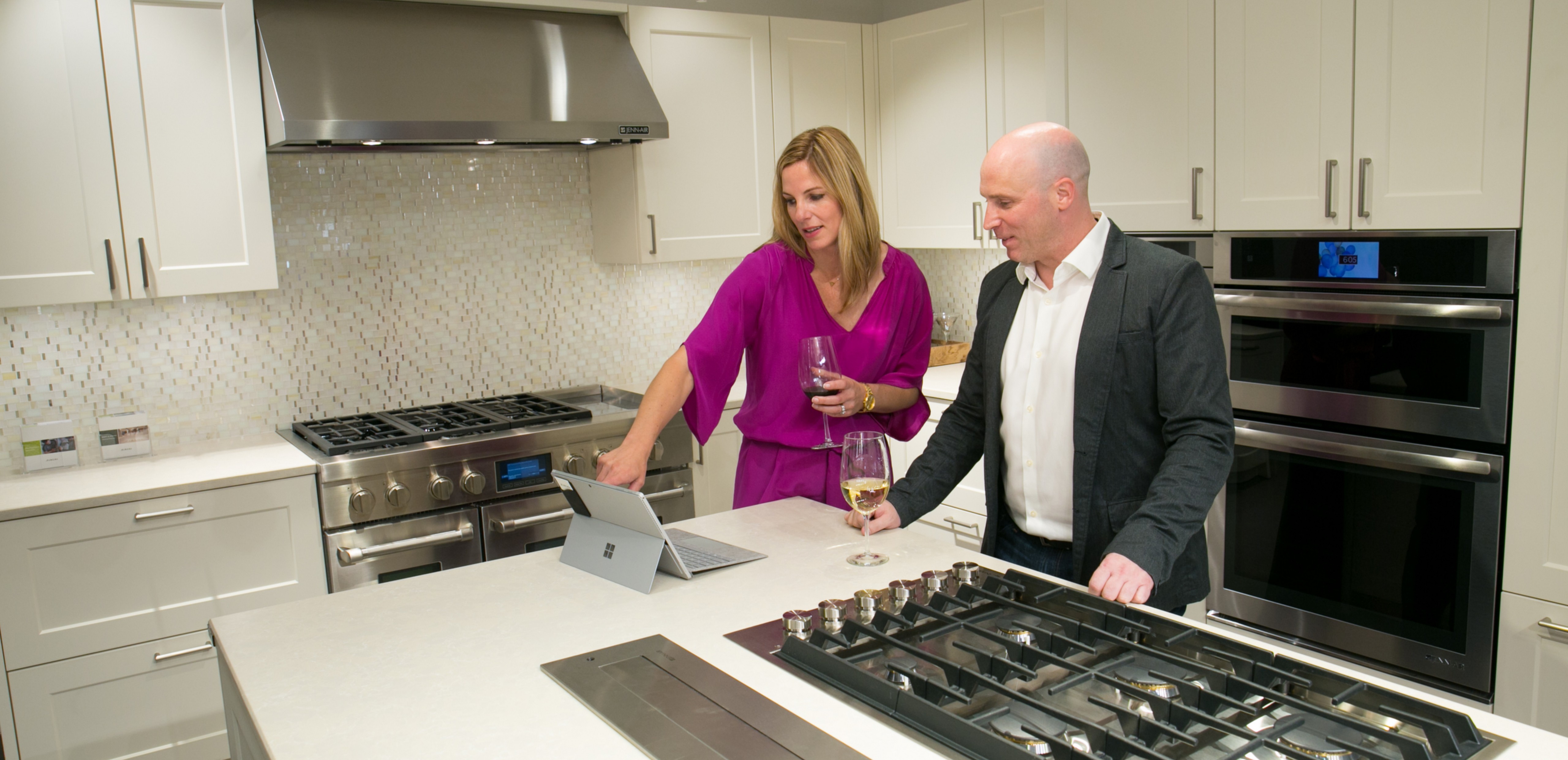The collaboration coefficient: three keys to empower workplace collaboration
We live in an era where existing business models are being disrupted faster than ever before, fueled in large part by rapid changes in digital innovation. More distributed and digitally savvy employees expect companies to deliver the same choice and access to technical advancements in the workplace that they experience in their daily lives. Companies that want to remain relevant and successful must transform themselves to meet these expectations and fully unlock their employees’ creativity. Technology is one key, but digital transformation requires business leaders to rethink how they connect their teams effectively.
Here we’ll share the latest research from Forrester Consulting and workplace experts on three key areas of investment companies are making to achieve greater outcomes through collaboration.
For any business to remain agile, innovative and relevant over the next 10 years, it must attract, retain and unlock the potential of its human capital. As more and more organizations, large and small, are globally dispersed, an engaged workforce is at the heart of driving business forward.
Over the last 12 months, the Microsoft Surface Group connected with industry-leading experts and researchers in collaboration and modern workplace development including analysts, ergonomists, workspace consultants, architects and designers to understand the role of collaboration in an organization and how companies can invest to foster better collaboration. One of the top problems businesses face? Teams are not as effective or engaged as they could be, therefore businesses may not innovate as quickly as they need to.

According to Forrester Research, “Many enterprises struggle with gaps in their workplace collaboration technology, environments that are not built for collaboration, and cultures that do not fully support teams to achieve better outcomes. The result is teams that are not as effective as they could be.”
Why is this the case? Customers, employees and citizens are savvier than ever before, placing extremely high expectations on businesses and organizations. The workforce (the people) and the workplace (the spaces in which people work) are evolving. Businesses are under tremendous pressure to innovate faster and faster. The need for companies to tap into the unique value of their people is becoming more critical.
“The greatest value of people now is around idea creation, creativity and new innovation.”
Greg Parsons, vice president of Global Work at Herman Miller
Throughout our research, we saw that the principles of collaboration are most effective when grounded in a holistic, people-centered approach that considers employees’ needs across their different activities throughout the workday. Greg Parsons, vice president of Global Work at Herman Miller, the furniture design firm, says, “The greatest value of people now is around idea creation, creativity and new innovation.” This mirrors the realities of the most profitable sectors today, idea-centric industries like finance, media and IT, which account for 22 percent of revenues but over 40 percent of profits.
As more and more companies look to build a more engaged workforce, collaboration is key. The sweet spot of effective collaboration lies in the space where three critical investments converge:
- Building a collaborative culture grounded in a growth mindset that celebrates individuals and rewards group outcomes
- Deploying a simple, knowable technology toolkit, leveraging the convergence of recent digital advancements
- Designing intelligent, connected environments that encourage engagement and reduce collaborative friction while offering employees choices
We commissioned Forrester Consulting to survey 741 business and facilities decision-makers and 1,032 information workers revealing the office is still the productivity hub for many companies, and “when leaders get it right, optimized meeting spaces, technology and culture lead to business benefits.” Forrester also found that investments in all three key areas led to heightened creativity, better products and business agility.
We also sat down with Convene, SHoP Architects, Gensler and Herman Miller, among others, to capture their vision and advice on how to empower and engage employees to achieve better outcomes.
Let’s address the three key areas one at a time.
Creating a collaborative culture
Changing corporate culture doesn’t come quickly or easily, and can be the most difficult of the three building blocks for collaboration because you can’t buy culture.
It starts with a growth mindset and being “insatiably curious,” according to Anna White, general manager of HR at Microsoft. White says, “We need to stop acting as knowers, who seem to have all the answer and ignore input from others, but become constant learners and proactively seek input and feedback from others.”
To serve the diverse needs of its customers, a company must embrace internal diversity and inclusion in a meaningful way. Dan Winey, COO of Gensler, notes the value of “many inputs and viewpoints and diverse ideas coming to the table.” When employees collaborate, it’s crucial to make sure all voices are heard and tap into the collective power of all employees, at all levels.

Leaders are also expected to be role models for successful collaboration. Performance, and the rewards associated with team wins, can be measured as impact resulting from a combination of each employee’s individual accomplishments that contribute to the team, their contribution toward the success of others, and how their results build on the work, ideas and efforts of others.
Changing habits takes time and effort, and success usually happens by addressing a single group habit and then adding others over time. Focusing on a keystone habit can help shape many others downstream. For example, prioritizing being on time for meetings creates mutual respect. Building a collaborative culture is part of the long game. By focusing on group habits, celebrating the unique attributes of individuals and rewarding group outcomes, organizations build a culture of collaboration and maximize their people power.
Innovative technology shifts behaviors
In the future, all companies will be digital companies. Whether or not their products are digital, the services that engage customers and employees will be connected via hardware, software, services and applications that act as a catalyst to shift behavior. Christopher J. Kelly, co-founder of Convene, says that companies today need to rethink technology not as a workplace feature but as its very foundation. He stresses the importance that “anybody’s first experience with technology is completely seamless,” to encourage adoption and regular use. Ease of use is essential for collaboration technology as people get nervous operating even simple collaboration tools, often because of a deep fear of failure in front of peers.
Forrester found that 41 percent of employees report they now spend more time away from their desk than they did two years ago.
To achieve increased adoption, collaboration technologies must support a seamless transition from place to place, device to device, and from personal to group computing. Forrester found that 41 percent of employees report they now spend more time away from their desk than they did two years ago — many significantly so. This calls for investments in more versatile and more personal computing tools that engage the senses and adapt with both the individual and the group.
Anton Andrews, director of the Microsoft Envisioning Center, says to start with “technologies that are built from the ground up for collaboration, for multiple people to input and ideate together at the same time.” Gervais Tompkin, design strategy studio director at Gensler, stresses that technologies that enable “video, gesture, layering … really allow you to bring your whole sensory self to collaborating.” Tompkin adds that by allowing the “whole human to participate,” teams build the necessary trust and connections that set the stage for more innovative outcomes.
At Microsoft, we are obsessed with bringing the full human experience to the collaborative environment. We designed Surface Hub to simplify the deployment and management of collaboration technologies across an enterprise while creating the best workspace for teams to create, brainstorm, and form engaging and productive connections. Surface Hub is purpose-built to fill the gap between analog and digital thinking for improved group flow by combining virtual teleconferencing, whiteboard ideation and projection while fitting beautifully into the modern office. John Cerone of SHoP Architects, an early user of Surface Hub, describes the type of outcomes expected from group computing technologies today: “that fluid process, that kind of stream of consciousness [that] actually leads to more coherent design.”
Technology on its own can certainly shift behavior and engage employees in new ways, but without the proper environments, technology may be overlooked, unused or avoided.
Promoting intelligent, connected environments
Gone are the days of small offices overlooking factory floors where workers toil at one task all day, and communication is a one-way flow of orders from management. In its Design Forecast 2016, Gensler suggests engagement is the new differentiator, and rising expectations for engagement among employees, customers and teams will spur the growth of “open” collaboration spaces that welcome outsiders, including autonomous teams.
Historically workspaces were built as long rectangular rooms with long rectangular tables, because they were great for showing and telling, the primary group function of the past. Many of today’s workplaces are out of sync with people and their work, employees avoid them. Research from Herman Miller suggests that up to two-thirds of current meeting rooms are underused or avoided in workplaces today. What results are dramatic social, physical and cognitive inhibitors that keep people in their seat, and reduce the desire to pick up a digital pen or other tool, move around the room, or engage in a generative process. This also means companies aren’t optimizing their space investment, even as per-worker square footage shrinks from 225 square ft. in 2010 to less than 100 in 2017 in the U.S. according to a survey by CoreNet Global.
According to Tompkin at Gensler, the new face of productivity is influenced by “the shape of the table or even the lack of a table, action, posture, furniture — anything that encourages engagement.”
According to Tompkin at Gensler, the new face of productivity is influenced by “the shape of the table or even the lack of a table, action, posture, furniture — anything that encourages engagement.” Such changes can reduce some of the friction employees feel in an outdated workspace. But friction still exists and often begins in the development cycle for new spaces where the budget and project management for furnishings, surroundings and tools are misaligned.
Although decision-makers believe they excel in group collaboration investments, Forrester’s survey says their employees disagree. It finds only 34 percent of large meeting rooms are equipped with collaboration tools such as whiteboard and conferencing technology, and only 26 percent of smaller rooms that are used most frequently are properly equipped. While decision-makers are investing in collaboration and productivity tools, their top priority is often applications and mobile devices that allow employees to work offsite. Yet 79 percent of workers say it is important that their productivity tools allow them to work collaboratively with others in person, highlighting a dramatic misalignment.

Supporting teamwork requires fresh workspaces: Because many of today’s best workplaces start with an understanding of the way people work together and offer flexible choices based on what they do as individuals and as a group. Consider these core principles to aid the development of intelligent, connected environments:
- Provide ample circulation space for comfortable collaboration, and consider square rooms to avoid trapping people in corners or at the ends of long tables.
- Encourage collaborators to use all the room’s features and technology. Furniture whose shape opens up sightlines, and the inclusion of higher tables and chairs that allow perching, can encourage movement.
- Support the use of personal devices with features such as extra charging ports.
- Consider the experience of remote users with regard to acoustics and lighting.
- Integrate complementary AV technology to maximize the number of activities groups can do in one space.
Why invest in these three areas?
Forrester found that companies with forward-thinking, innovative workspaces promote higher office attendance, better teamwork and faster projects, in addition to attracting new talent. A full 51 percent of decision-makers who have recently updated their office environment believe that physical spaces optimized for collaboration lead to higher employee satisfaction. Additionally, 49 percent believe that it makes for a better team culture and, as a result, 36 percent experience higher employee retention rates.
Companies don’t have to navigate change alone
To become a digital company means building systems of intelligence to leverage every system, device, process and asset across the organization. Companies that succeed through digital transformation will build new capabilities to accelerate collaboration. The ability to listen, predict and respond to customers instantly will be a competitive advantage. Innovative devices, applied in new ways, can help shift behavior, connect disparate teams and improve engagement through software and services.
That’s a tall order, but the good news is, you don’t have to go it alone. A space systems integrator or design company can research the impact of the physical environment on your desired outcome. An IT solutions provider can empower your people with the right tools. Consultants can help guide how teams work together. Countless resources, including Microsoft and its ecosystem of partners, can help companies realize their own definitions of highly functional collaboration.
We encourage you to ground yourself in the Forrester Digital Transformation study to arm yourself to battle for the required investment. Find inspiration from the modern workplace experts in our video, which highlights the three keys to improved outcomes from collaboration. Learn more about technology built for collaboration from the ground up like Microsoft Surface Hub. Then engage with the specialists you need around your guitar-pick-shaped table to design your own collaborative culture, technology and environment as you begin this journey.
When organizations start unlocking the power of the group, amazing things can happen.
-
 September 19, 2016
September 19, 2016HoloLens experience “Destination: Mars” now open at Kennedy Space Center Visitor Complex
Microsoft HoloLens -
 September 14, 2016
September 14, 2016Microsoft Surface launches a warranty primed for schools and education
Surface -
 September 1, 2016
September 1, 2016Luxury retailer Pirch taps Surface to enhance customer experience, drive business
Surface
